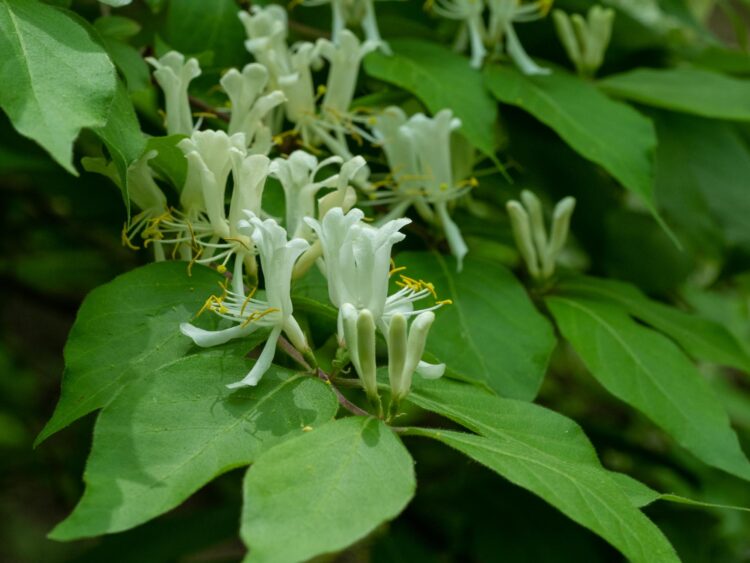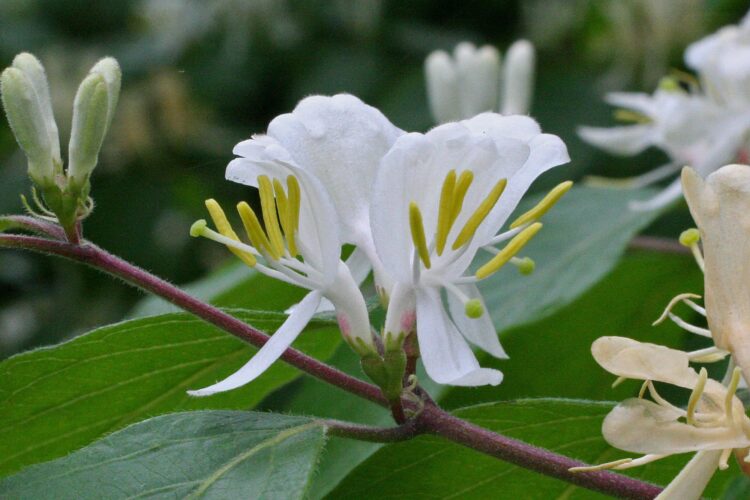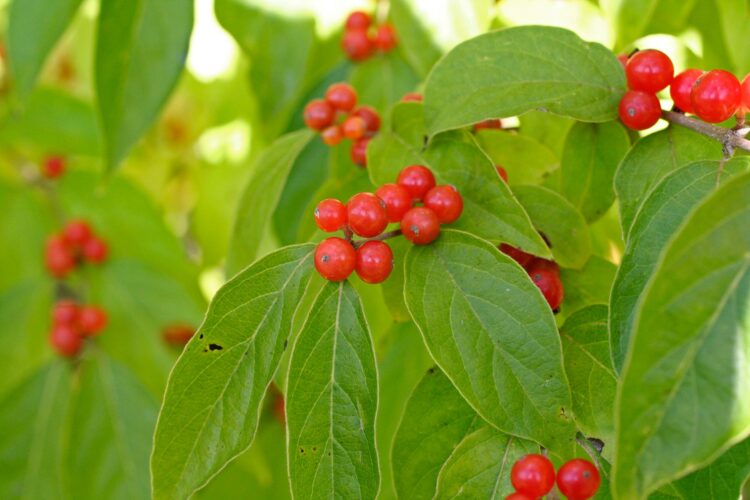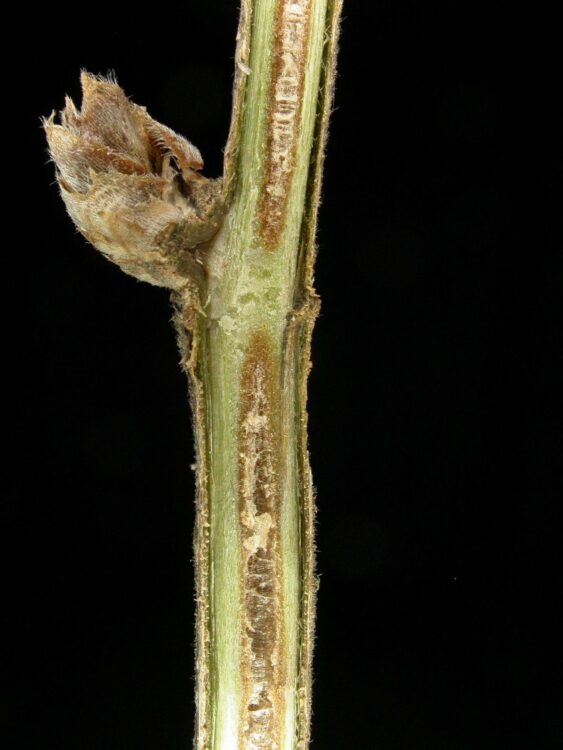Amur honeysuckle (Lonicera maackii)
Caprifoliaceae, the honeysuckle family
How to recognize Amur honeysuckle. Honeysuckles are opposite-leaved shrubs (or in a few cases woody vines) with simple and entire (neither toothed nor lobed) leaves. Mostly we encounter invasive non-native species such as this one, which is among our worst ecosystem-disrupting weeds.

Amur honeysuckle has opposite, simple, entire leaves.
Honeysuckle flowers are bilaterally symmetric, have fused petals, and are arranged in pairs of individual flowers that are fused at the ovary bases.

Honeysucke flowers are fused at the base.
The fruits are small red berries (fleshy throughout).

Honeysuckle fruits are true berries, paired as the ovaries are fused at their bases.
Older Amur honeysuckle plants have multiple stems that arch outward, with bark that is gray to tan, with distinctive interlacing ridges.
In the winter. Amur honeysuckle twigs are narrow, with alternate buds, and hollow pith!

Honeysuckle twigs have hollow pith.
Where to find Amur honeysuckle. E. Lucy Braun, in The Woody Plants of Ohio (1961, 1989; The Ohio State University Press) tell us that this species “is “Reported only from Hamilton County, where it is becoming abundant in pastures and woodlands.” Well, that was a long time ago. and it’s sure spread since then. It’s especially abundant in low-lying areas with calcareous soil, i.e., most of Ohio except for the southeastern counties (where you still find it).
Ooh ooh. I have a question!
What is it about the leaf phenology of Amur honeysuckle that helps make it so invasive?
As well explained in this article by David Taylor for the Kentucky Native Plant Society, Amur honeysuckle starts leafing out in March, long before native trees and shrubs, and the leaves don’t senesce until at least late October, giving the shrub an extra 5-8 weeks of photosynthetic activity. Moreover, it is somewhat frost-tolerant. These traits help make it invasive.
